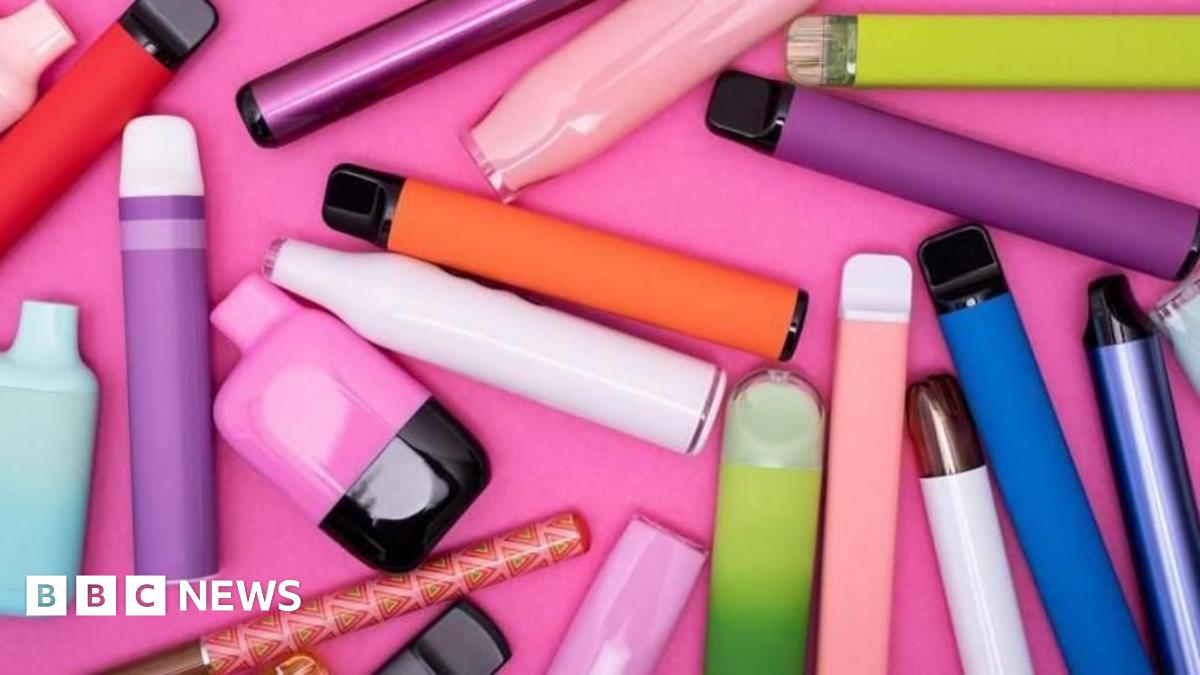The Disposable Vape Ban: A Look At Its Effectiveness

Welcome to your ultimate source for breaking news, trending updates, and in-depth stories from around the world. Whether it's politics, technology, entertainment, sports, or lifestyle, we bring you real-time updates that keep you informed and ahead of the curve.
Our team works tirelessly to ensure you never miss a moment. From the latest developments in global events to the most talked-about topics on social media, our news platform is designed to deliver accurate and timely information, all in one place.
Stay in the know and join thousands of readers who trust us for reliable, up-to-date content. Explore our expertly curated articles and dive deeper into the stories that matter to you. Visit Best Website now and be part of the conversation. Don't miss out on the headlines that shape our world!
Table of Contents
The Disposable Vape Ban: A Look at its Effectiveness
The rising popularity of disposable vapes, particularly among young people, has led to a wave of bans across various regions globally. But are these bans actually effective in curbing youth vaping rates and achieving their intended public health goals? This article delves into the evidence, exploring the successes, shortcomings, and unintended consequences of disposable vape bans.
The Rationale Behind the Bans:
Disposable vapes, often marketed with appealing flavors and sleek designs, have been criticized for contributing significantly to youth vaping addiction. Their affordability and lack of perceived long-term commitment make them particularly attractive to teenagers. Bans, proponents argue, are necessary to:
- Reduce youth vaping rates: The core argument is that restricting access will directly lower the number of young people initiating vaping.
- Address environmental concerns: The sheer volume of waste generated by these single-use devices presents a significant environmental problem. Bans aim to mitigate this impact.
- Limit exposure to harmful chemicals: Many disposable vapes contain nicotine and other potentially harmful chemicals, and bans seek to minimize exposure.
Effectiveness: Mixed Results and Unintended Consequences:
While the intention behind the bans is laudable, the effectiveness is a complex issue with varied results. Studies on the impact of bans are still emerging, and the data is often conflicting.
- Some Successes: In certain jurisdictions, bans have been associated with a reduction in youth vaping rates, at least in the short-term. This is often coupled with increased enforcement and public awareness campaigns. However, correlation doesn't equal causation, and other factors could be contributing to this decline.
- Black Market Boom: A significant concern is the rise of the black market. Bans often lead to an increase in the sale of illicit, unregulated disposable vapes, potentially containing even more harmful substances. This undermines the intended benefits and poses new health risks.
- Shift in Consumption Patterns: Bans haven't necessarily eradicated vaping. Instead, many users have shifted to other vaping products, including refillable vapes or even combustible cigarettes. This highlights the need for a multi-pronged approach beyond simple bans.
- Enforcement Challenges: Effectively enforcing bans is difficult and resource-intensive. The ease with which disposable vapes can be smuggled or sold online poses a significant challenge for regulatory authorities.
Beyond Bans: A Holistic Approach:
While bans play a role, a more comprehensive strategy is crucial for tackling the youth vaping epidemic. This includes:
- Raising the minimum age: Stricter age restrictions and better enforcement are essential.
- Flavor bans: Restricting appealing flavors, especially those attractive to young people, is another effective measure.
- Public awareness campaigns: Educating young people and parents about the health risks associated with vaping is crucial.
- Investing in cessation programs: Providing readily accessible and effective cessation programs for those who want to quit is vital.
- Regulation of online sales: More robust regulations and enforcement regarding the online sale of vaping products are needed.
Conclusion:
The effectiveness of disposable vape bans is far from conclusive. While some evidence suggests a reduction in youth vaping in certain contexts, the emergence of a black market and shifts in consumption patterns highlight the limitations of bans as a standalone solution. A more holistic approach that combines bans with other comprehensive strategies is crucial for effectively addressing the public health concerns surrounding disposable vapes and youth vaping. Further research and long-term data are needed to fully assess the long-term impacts of these bans and inform future policy decisions. The conversation must continue, encompassing not only bans but also the broader landscape of vaping regulation and harm reduction.

Thank you for visiting our website, your trusted source for the latest updates and in-depth coverage on The Disposable Vape Ban: A Look At Its Effectiveness. We're committed to keeping you informed with timely and accurate information to meet your curiosity and needs.
If you have any questions, suggestions, or feedback, we'd love to hear from you. Your insights are valuable to us and help us improve to serve you better. Feel free to reach out through our contact page.
Don't forget to bookmark our website and check back regularly for the latest headlines and trending topics. See you next time, and thank you for being part of our growing community!
Featured Posts
-
 31 Year Mortgage Term The Reality For First Time Buyers
Jun 03, 2025
31 Year Mortgage Term The Reality For First Time Buyers
Jun 03, 2025 -
 Olympic Champion Tom Daley Openness Identity And Family
Jun 03, 2025
Olympic Champion Tom Daley Openness Identity And Family
Jun 03, 2025 -
 Chicago Sky Honors Candace Parker Courtney Vandersloot Shares Emotional Tribute
Jun 03, 2025
Chicago Sky Honors Candace Parker Courtney Vandersloot Shares Emotional Tribute
Jun 03, 2025 -
 When Will My June Social Security Check Arrive Full Payment Schedule
Jun 03, 2025
When Will My June Social Security Check Arrive Full Payment Schedule
Jun 03, 2025 -
 Accel Kkrs Strategic Acquisition Of Care Line Live Growth Plans And Future Outlook
Jun 03, 2025
Accel Kkrs Strategic Acquisition Of Care Line Live Growth Plans And Future Outlook
Jun 03, 2025
Latest Posts
-
 Break In Arkansas Killing Case Suspect Captured At Local Barbershop
Aug 02, 2025
Break In Arkansas Killing Case Suspect Captured At Local Barbershop
Aug 02, 2025 -
 Only Fans Streamer Targeted In Shocking Crypto Attack Cctv Footage Released
Aug 02, 2025
Only Fans Streamer Targeted In Shocking Crypto Attack Cctv Footage Released
Aug 02, 2025 -
 A Mothers Final Days Unraveling The Mystery Behind Her Alleged Poisoning
Aug 02, 2025
A Mothers Final Days Unraveling The Mystery Behind Her Alleged Poisoning
Aug 02, 2025 -
 Community Grieves Remembering The Service Of Officer Didarul Islam
Aug 02, 2025
Community Grieves Remembering The Service Of Officer Didarul Islam
Aug 02, 2025 -
 Illegal House Shares A Breeding Ground For Rats Mold And Overcrowding
Aug 02, 2025
Illegal House Shares A Breeding Ground For Rats Mold And Overcrowding
Aug 02, 2025
